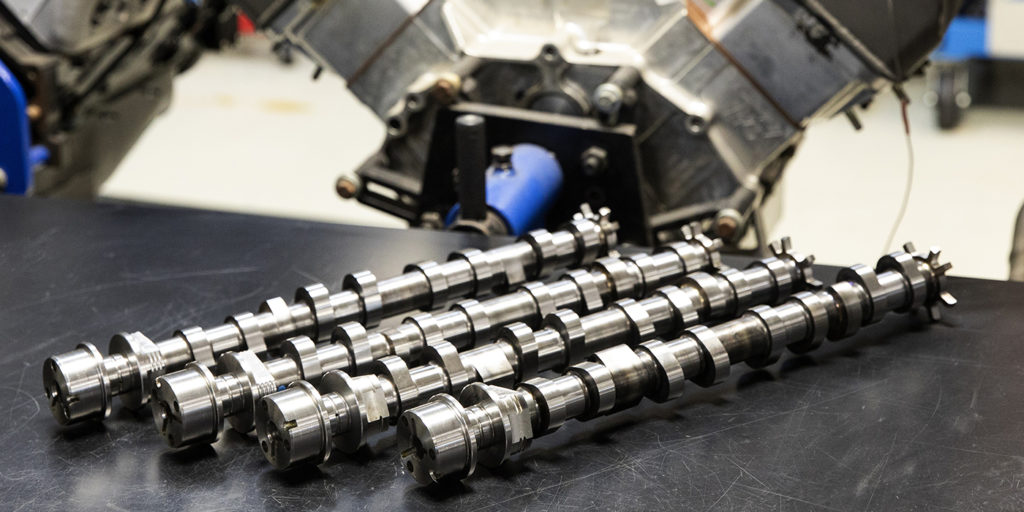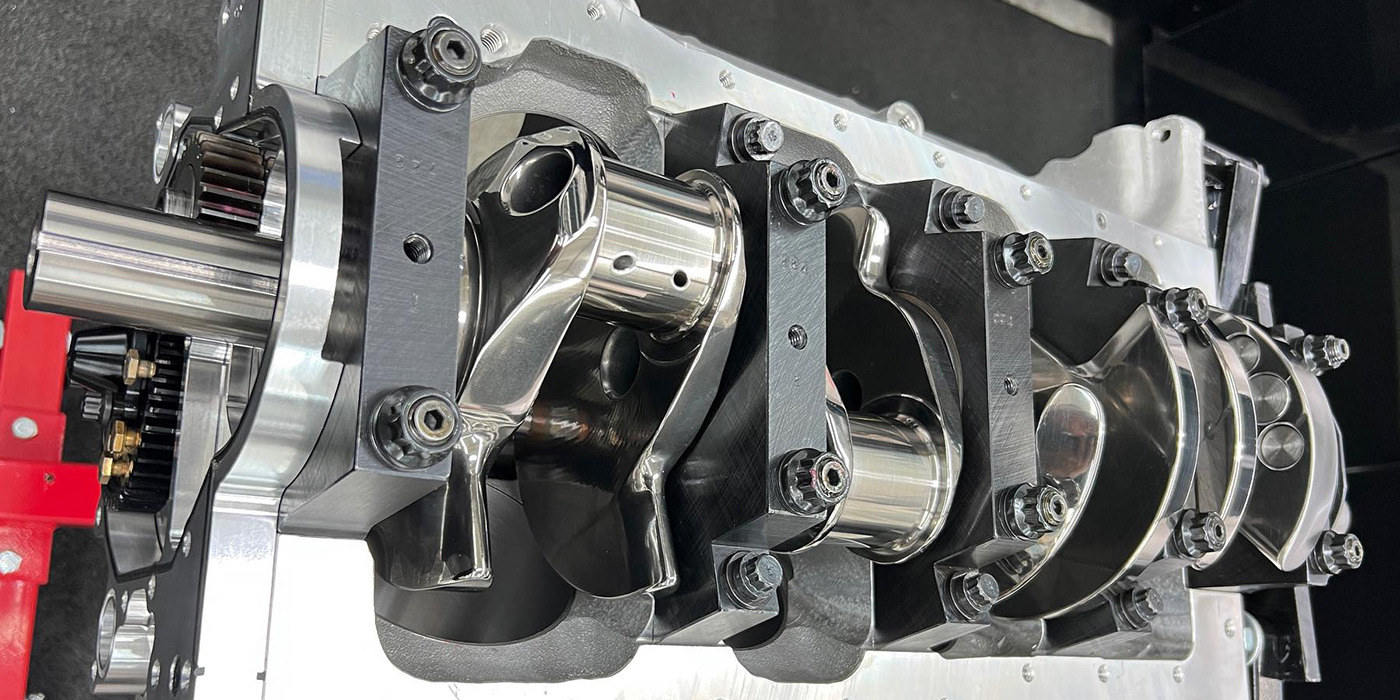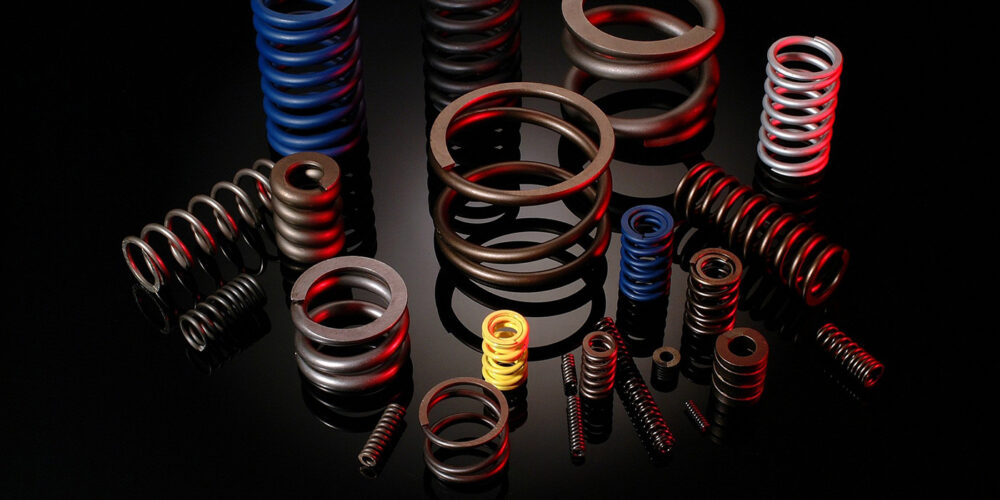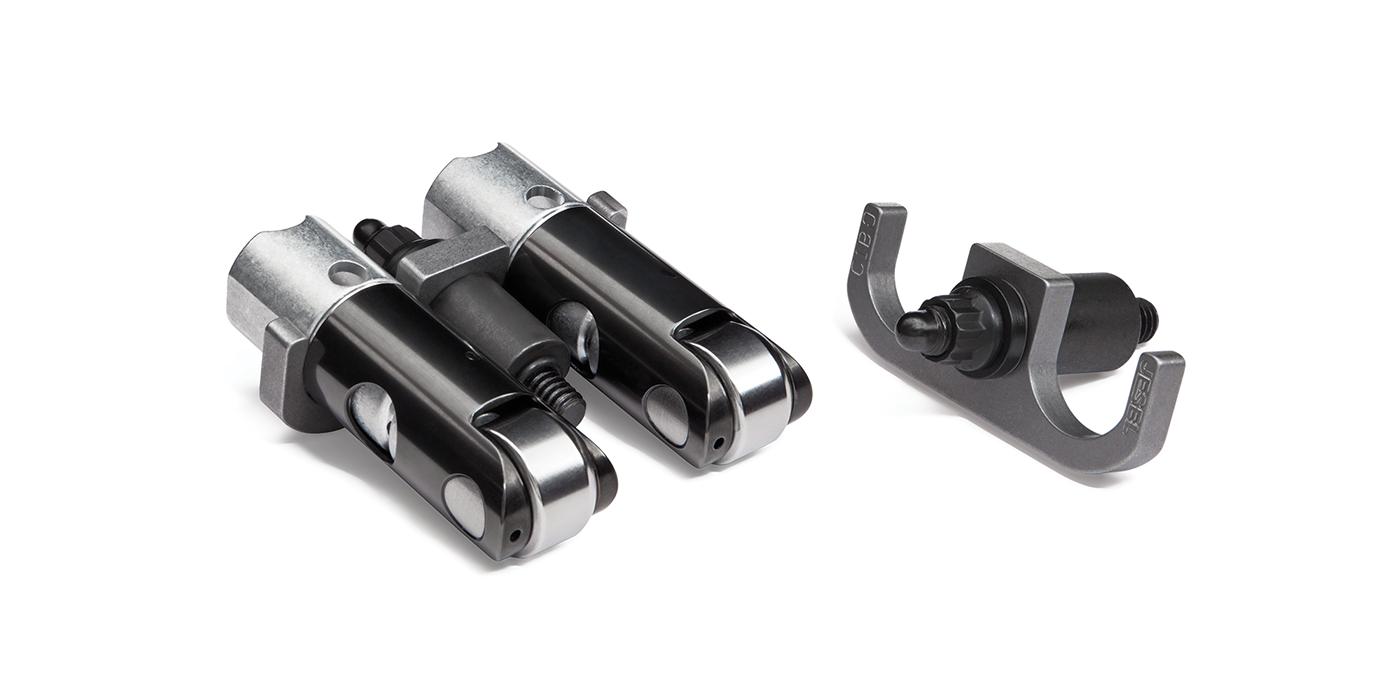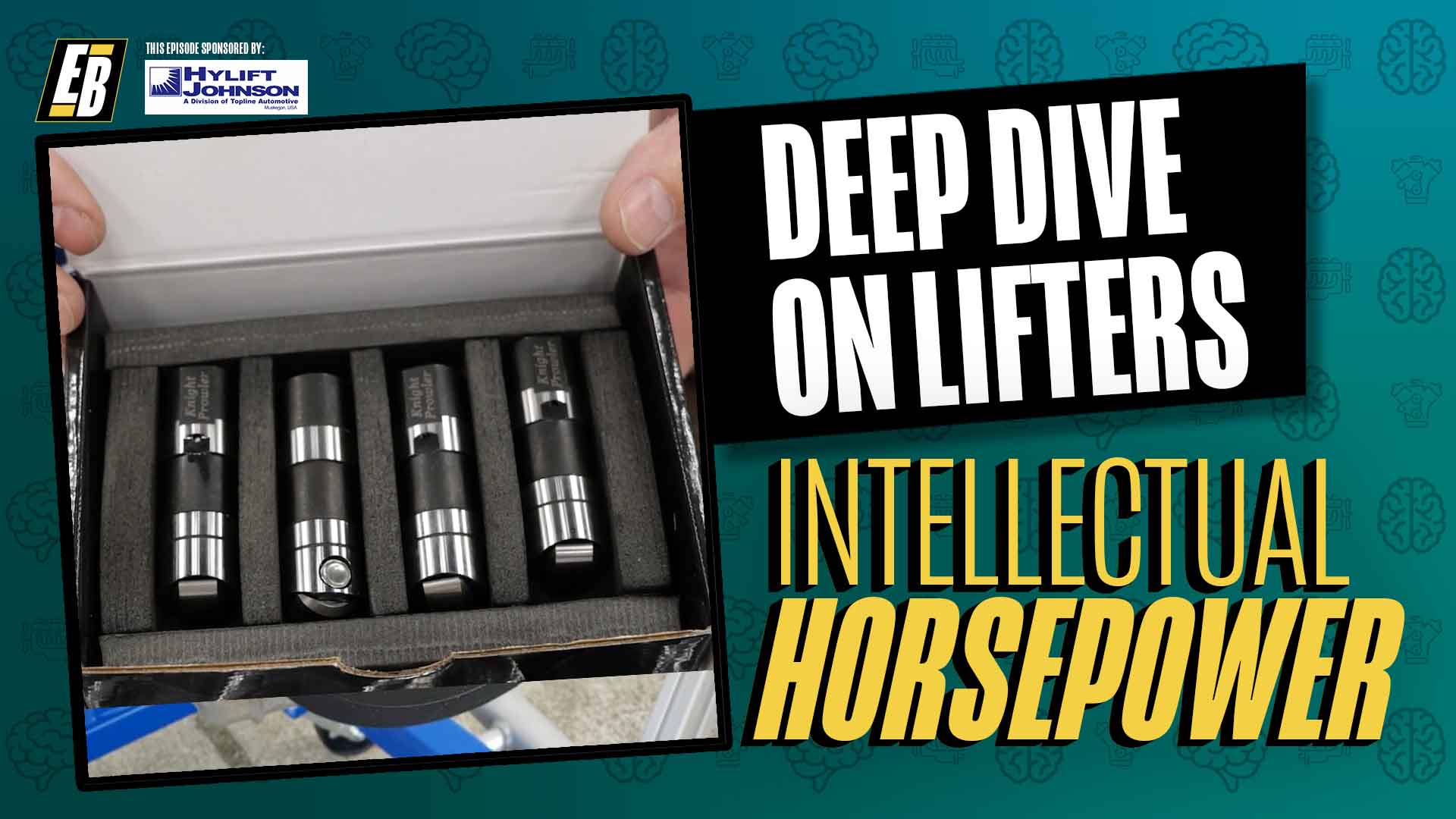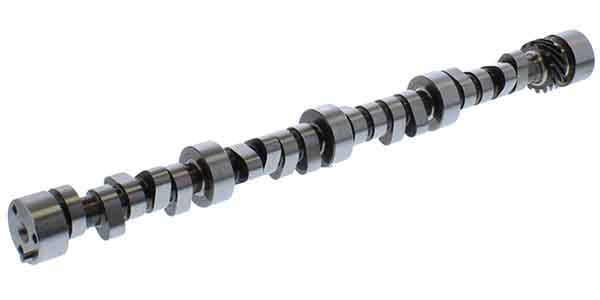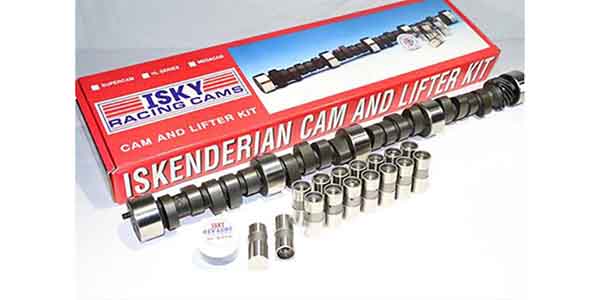Having spent half his life overseeing the camshaft development group at COMP Cams, Billy Godbold is one of the top authorities when it comes to camshaft technology. He leads a group responsible for somewhere around half a million different, unique lobe designs. We caught up with 50-year-old Godbold to discuss all things camshaft, from common misconceptions to proper camshaft selection to firing order and much more.
As you’re well aware, the camshaft is often called the heart or mind of a performance engine because each valve event dictates the wave tuning and how the exhaust system and intake system work together.
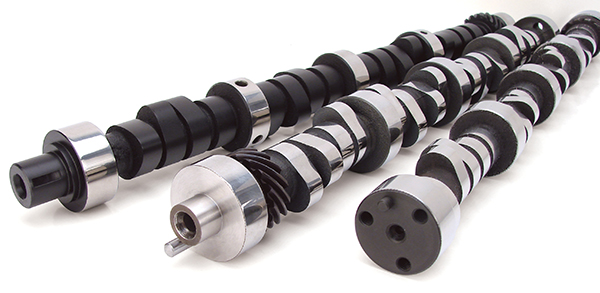
“The camshaft is what ties everything together,” Godbold says. “It’s like the conductor of a symphony, or a football coach for an NFL team. A lot of times, the camshaft is the last thing you should pick. Even people who are really, really good at engines, don’t get the subtleties of valvetrain selection.”
Of course, as with most engine-related choices, knowing your application is what matters most in picking the proper components and set ups. If you’re figuring out the right camshaft, you have to know your application because it’s going to be different for drag racing than it would be for endurance racing or something like street/strip.
“You have to understand that the camshaft is part of a package,” he says. “Sometimes, you’ll see somebody buy a ton of just amazing, wonderful parts, but it’s like they never took the step back to figure out what their goals were. They have all these amazing parts, but they’re a mix-match. This part is good for one application and that part is good for another application, but the whole system together wasn’t a great plan.
“Good engines all have some great parts in them, but great engines started with a good plan. Performance engines are not Swiss army knives. They don’t do everything well. Their precision tools, and that’s the key is to figure out your goals and what you want to achieve.”
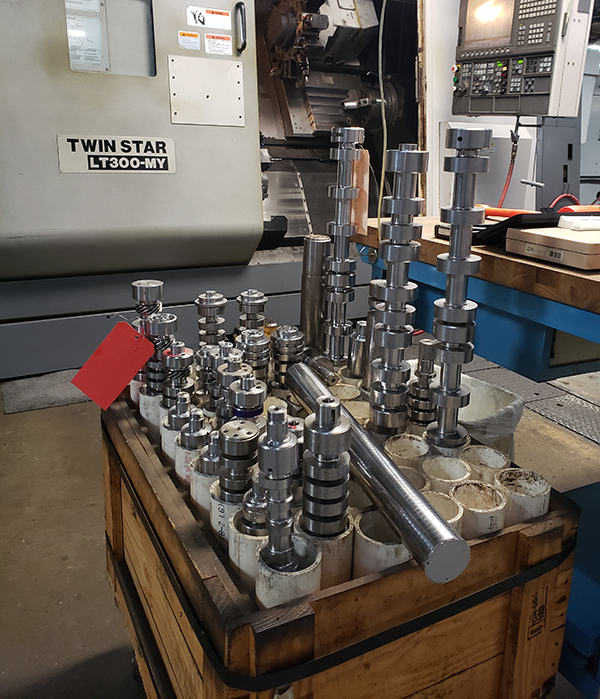
In that regard, Billy says there are no bad goals. You want to go 150 mph in a jet boat? Great. He can help you do that. You want to go 480 mph at Bonneville. No problem. He can help you do that. But is the right camshaft to go 480 mph at Bonneville, the right cam to put into your diesel pickup? No, it’s not even close.
“Customers get excited and caught by the flashiness of some parts and it takes a little bit away from the whole plan, or they try to make their application do a little bit of everything,” Godbold says. “When it does a little bit of everything, it doesn’t do anything as well as it should.”
While application is crucial to understanding your valvetrain set up, engine builders also must pay attention to specific details of the engine itself in terms of whether they’re working with import engines, V8s, diesels, etc.
“The valvetrain is a system,” Godbold says. “If you look at most of the import designs, you’ll see that they have very, very rigid valvetrains. Because of that extreme rigidity, you don’t have much shock absorber in the valvetrain, so you have to be careful about how you get it to start moving. But two, you have that extreme rigidity, so once you get it moving, you can really, really accelerate.
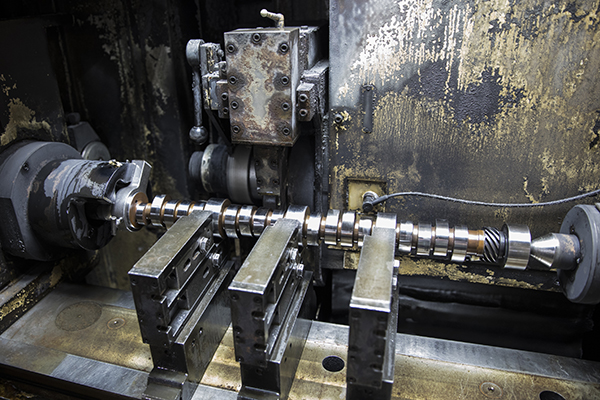
“It wouldn’t be odd at all to see something for a 4G63 or a K-series Honda having three times higher acceleration rates than you would on something from a small block Chevy, or six to eight times more acceleration than you’d see in something like a Duramax or Powerstroke diesel.”
To know what the stiffness of the valvetrain system is, Billy says they’ll measure lift with a checking spring that’s only a couple of pounds over the nose with a solid lifter. Then, they’ll check it with the real spring and it’ll be hundreds of pounds over the nose.
“You look and see how much deflection there is,” he says. “By measuring the deflection – the difference between loaded lift and unloaded lift – we want to know the deflection in pounds per inch. If you have 100 pounds open and it moves .010˝, you have 10,000 pounds per inch stiffness, which is a really, really lousy stiffness.
“An overhead set up might be 50,000 pounds per inch and the small block Chevy may be 15,000 to 20,000 pounds per inch. Some of the NASCAR stuff today would look very, very comparable to what some of the import four valve systems are in terms of stiffness – very, very stiff and very, very light.”
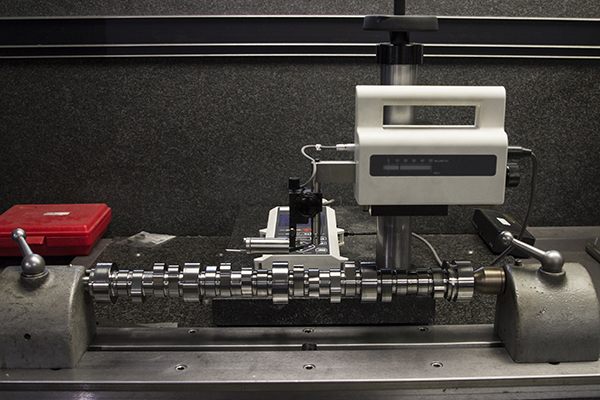
One element of camshafts that isn’t very well understood, according to Godbold, is lift. However, proper lift can be explained.
“There’s a simple ratio of lift to diameter of the valve that works great for just about anything,” Godbold says. “It used to be that about 20% lift diameter was the OE number in the ‘50s. A small block Chevy back then with a 2˝ valve had .400˝ lift. Then, valve jobs got better and port jobs got better, so people moved that lift diameter to 25%.
“With that same 2˝ valve, you have .500˝ lift. Over time, that even got tweaked a little bit more. Now, an LS 2˝ valve would have .520˝ lift, which is around 27%. On the street, with any decent head, about 30% lift to diameter is about right.
“At the same time, on the race side, people got really good at the back cuts of the valves and the ports going up. We started to see that 30% was good, but 35%-40% is better. About 10-15 years ago, steep valve seats became really popular. On a two-valve engine, you’ll see 50-plus degree seats, which like a lot of lift, so getting up toward the 45%-50% range is about perfect.”
After figuring out your lift to diameter of the valve, Godbold says the next step is to figure out what valve spring you’re going to use.
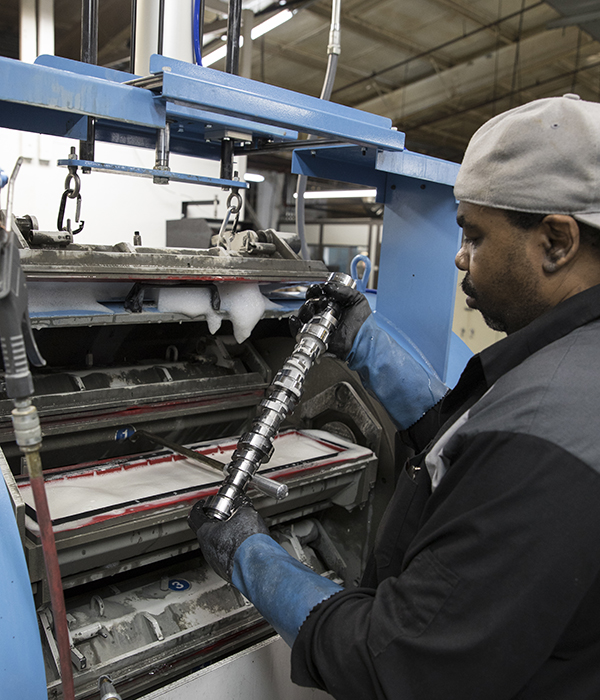
“I see people all the time buy a .650˝ lift spring and put it on a .550˝ lift cam,” he says. “What people do not understand is running a spring well under its intended lift in applications that go over 3,000-4,000 rpm, you need to be closer to bind. At .650˝ lift, that thing had .06˝ distance to bind. They put it on .550˝ lift, so now you’re at .160˝ to bind.
“The real dampening for a valve spring occurs over the nose. If you don’t get that valve spring close to bind, you don’t give it a chance to calm down. If you get too close to bind, that’s not good either. There is some magic in the distance to bind. Different springs like different distance to bind, but I’ve never seen a spring that wants to be .160˝ to bind.”
As with figuring out the proper lift and things associated with that, another element of the camshaft some people get caught up on is lobe separation, as well as the interaction between valve clearance and overlap. However, intake and exhaust events should take precedence.
“People think a tight lobe separation makes peakier power and a wide lobe separation makes broader power,” Godbold says. “They think that there’s magic in the lobe separation, and literally, when we’re doing cam development, the last thing I look at is lobe separation. That’s just not something that’s driving the boat.
“In the diesel market, for example, I’m spending 99% of my time figuring out when the intake should close and when the exhaust should open. The other 1% of the time I’m trying to make sure that the valves don’t crash into the piston without losing a whole bunch of compression. The two driving points are intake closing and exhaust opening. Then, to a great extent overlap. You’re trying to figure out how not to interfere with the valves and the pistons.
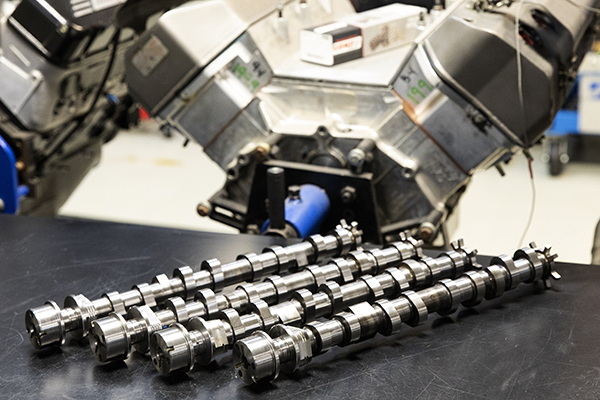
“When you try to put a valve and a piston in the same spot at the same time, neither one of them wins. The valve gets bent. The piston top gets cracked. The engine gets blown up. It’s just nasty. There has to be some synergy between the camshaft and the valve reliefs.”
In an effort to find performance gains, another common thing engine builders might try when it comes to camshaft design is changing the firing order.
“Back in the ‘90s, firing order was the most magical thing in the world in Pro Stock,” Godbold says. “Then, fast forward to all the new engines coming out in NASCAR, they did all this firing order stuff. You can swap any two cylinders that are 360 out in firing. Every fourth one you can swap.
“With a cross plane V8, you’re stuck. You’ve always got to fire on one pin, at least one time consecutively, and you’ve always got to fire on one bank, neighboring cylinders, consecutively, at least one time.”
According to Billy, you can do a lot worse than that, but you can’t do any better than that. Since you have to hit one pin twice in a row, you have to ask yourself, do you want it to be the front pin, like a standard small block Chevy firing order, where the only thing you have to keep the crank from whipping around is the balancer, or do you want it to be the last pin near the flywheel?
“Most people think all you’ve got in the back is a flywheel, but really, you’ve got the whole vehicle trying to dampen you,” he says. “Believe it or not, that’s a better damper than the balancer upfront. What you see with firing orders is let’s get that common pin that’s going to get hit and move it to the back.
“The next thing you see with the firing order is two cylinders are going to fire next to each other on a bank. You’ve got to have that. In the case of the small block firing order, they put it back under the header at the back as far away from the water pump as they could get it and wondered why those cylinders had a hard time sealing. Most of the alternate firing orders moved the paired cylinders up to the front, near the water pump, because what happens with paired cylinders firing is they get hot in between and it distorts the bore and that creates leak paths. Moving that to the front, there’s more water flow closer to the water pump.”
According to Billy, engine builders probably see about a 1% increase in performance, but it also helps relieve stress on the bearings.
“When you take an engine out with a revised firing order, you look at that front bearing and you’ll see that front bearing looks a little better,” he says. “What’s that mean to 99% of your customers? Well, it means that your 500-horsepower motor is 505 hp now and your bearings that would have gone half a million miles, will go 600,000 miles. Is that a big deal? It depends on just how hard that change was.
“When it was just changing a couple of plug wires and spending a little more on the camshaft – of course you do that every time. But, if you have to get out there and cut a wiring harness and move things around and reprogram it, do you want to do all that?”
Camshaft firing orders are not black magic. In fact, the principles of it are very well understood today and is used in gasoline, diesel and nitromethane engines.
“They do it in Top Fuel too,” Godbold says. “Clearly, on an 11,000-horsepower motor, 1%-2% is a bigger deal. It’s 100 or so horsepower versus only 5 horsepower.”
The lesson is simple – your camshaft matters. It impacts everything else in your engine, so make sure you’re selecting the right one for your use. EB

